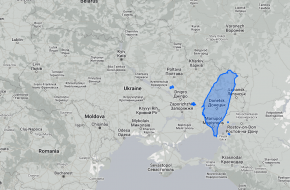Part 2 of 2: Taiwan has a training pipeline problem that is unresolved
4. According to Paul, Taiwan has ~500 Stingers (max), they are locked deep in armoury and few ever touched them. These foreign press should know better before copying Taiwanese MND PR rubbish as facts — tells the Americans their plan is asymmetric defence but proceeds to build 4 Yu Shan class LPDs (which does not fit the strategy). When the Taiwanese tell you that their shoot budget is 800 bullets, I suspect that it means they:
(a) won't need to train 600,000 conscripts for a longer duration in 2024, because only 19 years olds are required to do it. Many will be in university and will defer conscription until they graduate;
(b) they have a morale problem, even before enlistment — 37.2% (29.2% + 8%) in the 20-24 age group oppose conscription compared to 35.6% (15.7% + 19.9%) who support conscription. To make matters worse, the ROC Army intends to spend 1/8 of what Finland or Singapore spends to train an average infantry rifleman & 1/20 of Singapore to train a company marksman; and
(c) have not built the facilities needed to train with greater intensity in time. That seems to be the scope of change & size of ambition.
Coupled with the changes to training for volunteers, this sounds very sensible and will hopefully increase the effectiveness of the Taiwanese military.
5. A number of videos from the current Russo-Ukrainian War have demonstrated very poor urban warfare tactics, techniques & procedures (TTPs) from Russian armoured fighting vehicles (AFVs).
6. Many who support President Tsai have no clue on how to raise, train & sustain a conscript army that is able & willing to fight. If you ask Korea, Singapore or Finland to audit Taiwanese military training methods & hardware, it would get an ‘F’ grade. Like Russia, Taiwan has a serious unresolved training pipeline problem & lack of commitment by MND to reform both their TTPs and method to raise, train and sustain reserve battalions / companies. We should note the following:
(a) Today, the ROC Army is largely professional with advanced TTPs and they operate American weapons that include AH-64Es and HIMARS. It’s just that they don’t integrate their conscripts into the war plans of their active brigades — which are all understaffed.
(b) Taiwan’s conscripts: (i) are not trained on ROE shoots; (ii) don’t know how to provide an infantry screen for their AFVs (because to do that you need to train them to perform different roles, in each vocation); and (iii) don’t know how to conduct passage of line. The current training levels will ensure the the ROC Army performs more poorly than that Russians in Ukraine. It’s amazing how resistant the ROC Army brass is to reform or apply basic logic to manage and train their conscripts properly.
(c) Beyond that fact that Taiwan’s TTPs for urban warfare tactics are dated, the Taiwanese conscript can’t even conduct a ROE shoot. The current training program produces idiots with guns.
Q: What would be an indicator of real change in Taiwan’s conscript training methodology?
Ans: When pictures emerge of new urban warfare facilities, with a conscript company marksman operating a weapon system like the M110 semi-automatic precision rifle. This is because the company marksman provide force protection for the infantry screen to an armour advance in urban areas.
7. Not only does China have the world’s largest Navy, the PLAAF has a force structure that makes it difficult, if not impossible for a USN carrier strike group to get close to Taiwan, in the 1st 30 days of a cross-straits war.
8. According to Paul, Ukraine is 16x the size of Taiwan and in an all-out offensive of almost a fortnight Russia only threw 600 SRBMs & MRBMs across this vast landscape. IMO, China's PLA Rocket Force is expected to fire this many at Taiwan's key targets in the first wave of attack.
9. Unlike many air forces or navies within ASEAN or in Taiwan, the JASDF & JMSDF don’t just write a paper strategy, rather, they invest in the correct tools & platforms to win the future battles to come, as their strategy for deterrence.
10. For regional countries watching these developments with concern, there is little scope to move towards picking a side. Let me explain. Team Biden sees US security interests in the South China Sea as being quite limited. Therefore, it does not justify a significantly firmer American policy, which would generate an increased risk of a high-intensity war with China. Given that the Americans are neutral in these EEZ disputes, to some extent, Brunei, Malaysia, the Philippines, Vietnam and Indonesia are on their own. With the growing American domestic consensus for competing more intensively against China, the US will require a clear understanding that its interests are very limited to avoid increasing its military resistance.

